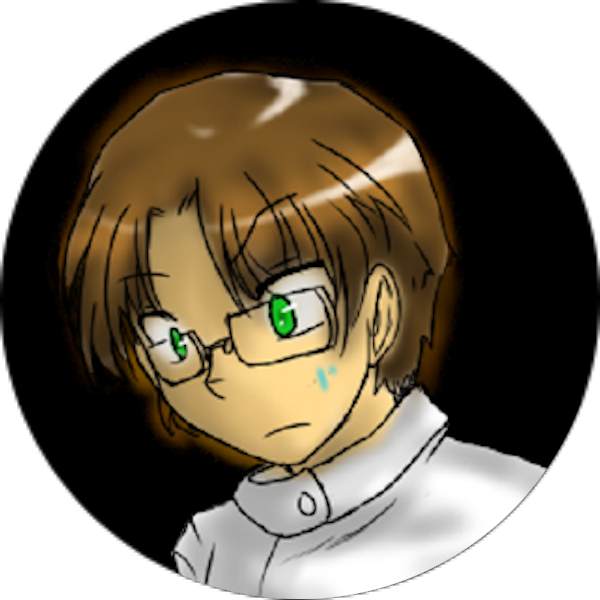Akifumi Kaneko, the creator of Wild Arms, and Matsuzo Machida, the creator of Shadow Hearts, inspired by their past works, launched a Kickstarter to help the development of their new projects, ARMED FANTASIA and PENNY BLOOD. After the Double Kickstarter campaign has reached its goal within the first 24 hours, 4Gamer got an opportunity to have an interview with Kaneko.
ARMED FANTASIA is a “westernpunk” RPG set in a world that’s turning into “wilderness”, in which the protagonist Ingram leaves his hometown, following a promise he made. The setting of the story is in the style of a western movie, with the main character becoming one of the adventurers called “Pathfinders”, and carrying a weapon named ARM (Aether Reaction Maximizer). With that in mind, the game will pique the interest of Wild Arms fans. We asked Kaneko about the details of how this project came to be, Kaneko’s approach to game development, and some other things.
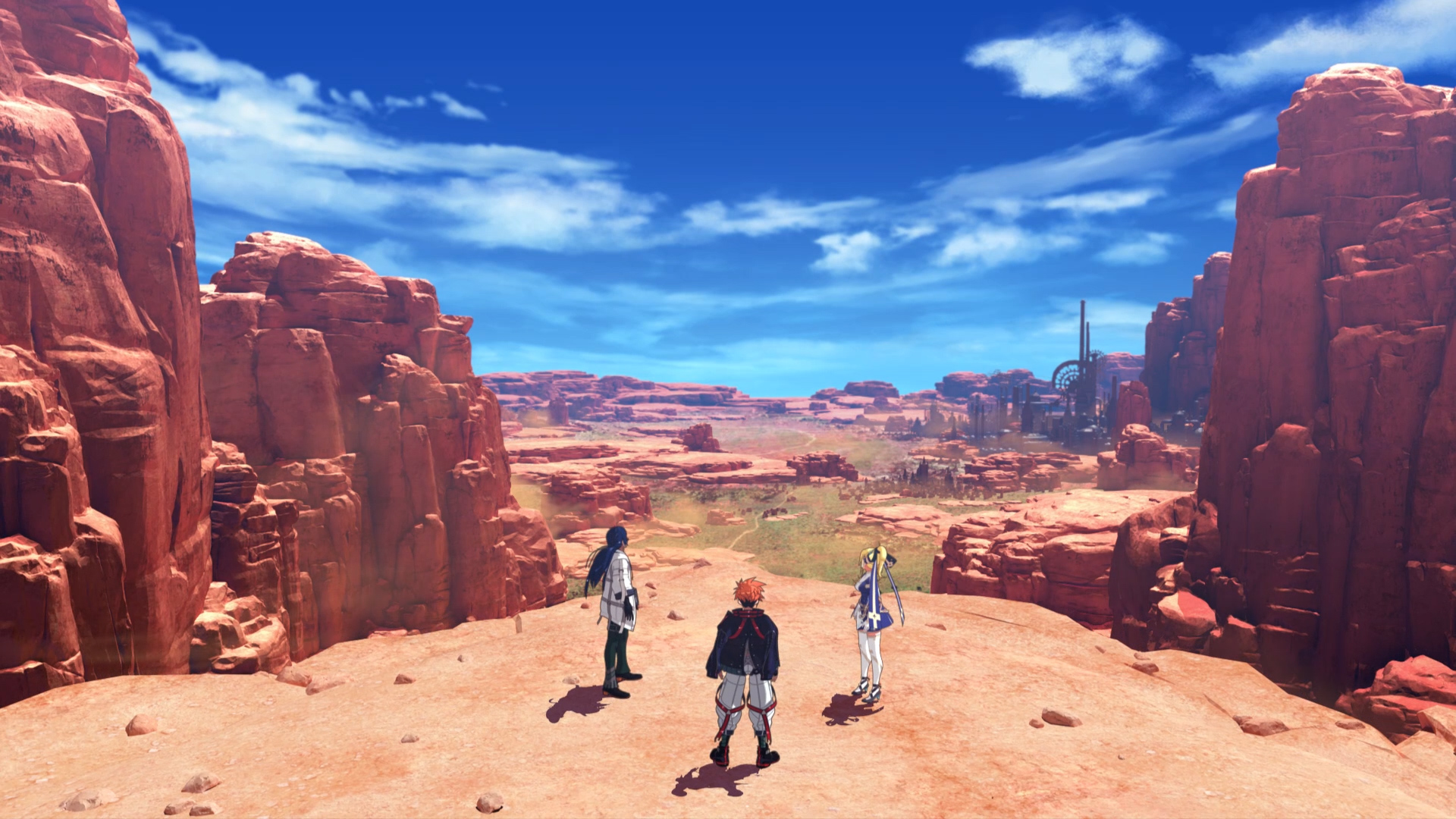
The need for a menu-controlled, turn-based, story-driven JRPG
4Gamer: Thank you very much for your time today. Now that you’ve launched the Double Kickstarter campaign for ARMED FANTASIA and Machida’s PENNY BLOOD, how do you feel?
Kaneko: We’re happy that we managed to reach the minimum goal in one day, and now we can start the development. I think this proves that there is a need for a menu-controlled, turn-based, story-driven JRPG. Since a lot of investment came from overseas, I feel that this need exists in the overseas market as well.
4Gamer: It’s quite an achievement for just the first day.
Kaneko: This is my first Kickstarter, and I’m trying my best to keep up with the speed. In the past, when we worked with big publishers, we could concentrate more on just making the game, but now we have to do the PR and advertising ourselves. I now fully realize that back then we were making games while being under protection.
4Gamer: Since you don’t have full-time staff for that, you have to get involved in PR yourself.
Kaneko: To be precise, I’m doing the planning and preparing materials. I’ve never done this before, but I’m the kind of person who enjoys new and unfamiliar things, and communicating things in our own way is interesting. Still, we can’t know for sure which way of communication is correct, because we’re advertising something that hasn’t been made yet. In the past this process was happening when the game was already 80~90% complete.
4Gamer: What was the reaction from Wild Arms fans?
Kaneko: It’s been 11 years since the last game, or 15 if we’re talking about an RPG specifically, but so far the response has been kind. It really feels like I’m back home. I’m glad that everyone remembers my old works fondly, to the point that they’re not only ready to accept my awkwardness, but also work together to back up the campaign. I can’t thank them enough for that.
4Gamer: With crowdfunding and early access, it seems that the notion of “supporting what you love” has taken root in games.
Kaneko: Currently we’re still at the preproduction stage, testing all kinds of ideas—you could say that we’re still dreaming. But after the Kickstarter is done, we’ll start working to turn those dreams into reality.
4Gamer: How did you decide to launch a Kickstarter in the first place?
Kaneko: As we talked with Machida, a creator with whom I have been in contact for a long time, we both mentioned that we’d like to see the rebirth of the menu-controlled, turn-based, story-driven JRPGs that we worked on in the past, but the publishers stopped us, forcing us to prove that there is an interest for this kind of genre. So, we got inspired and decided to go with a “then we’ll show them!” kind of mood. A major factor was that I’ve finished working on the Senki Zesshou Symphogear anime series, which took me out of game production for a while. I’m going to digress a bit, but right before I started working on Symphogear, I was planning another original RPG. ARMED FANTASIA ended up being derived from the ideas that I had for that RPG.
4Gamer: Looks like you’re off to a good start, as the number of backers is still increasing.
Kaneko: Personally, I think that the variety of genres and directions, not just in games but in entertainment in general, is wonderful to see. I play action RPGs in my free time, but that doesn’t mean that command-oriented RPGs shouldn’t exist. If I were to make an analogy from the older days of the game industry, it’s like enjoying casual 5800 yen games on PlayStation, while also being immersed in Neo-Geo fighting games with cartridges that cost tens of thousands of yen. I think having this kind of freedom of choice is the healthiest.
4Gamer: Why did you decide to make an old-school JRPG like ARMED FANTASIA?
Kaneko: Naturally, this was not a choice that goes against the times. When I thought about what I wanted to play myself, I ended up with a 90’s style JRPG. At this moment, no publishers are involved in the project. Basically, as I was coming up with the idea, it was not with the goal of pleasing publishers. The result was a turn-based RPG, where you sit back and think how to deal with the enemies. While it’s nostalgic, considering the times, this is a challenging and “aggressive” project. The great thing about Kickstarter is that it allows us to take on this challenge, and I wish that others will also take such challenge in the future, creating games in genres that are not limited by the times or the market.
4Gamer: It’s been a long time since your last game. How do you feel about it?
Kaneko: I can’t repeat this enough, I’m incredibly grateful. As someone who likes to get involved in a variety of projects, I’m happy to be back to develop games again, and Kickstarter ended up being an exciting experience that I never had in my career before. On a personal level, it’s also nice to be close to the fans who have supported me over the years. Looking back at it, I guess I should act more like a developer, but it’s fun to have the same perspective on the campaign as the players. Thank you for your patience.
4Gamer: What kind of battle system should we expect from the game?
Kaneko: The order of actions of allies and enemies is determined by their speed, which is going to be visualized. We aim to create puzzle-like battles, where you can switch the order of actions and connect the actions of allies to make them execute a chain action. At the same time, there’s going to be a “table flip” system which will allow you to interrupt and act regardless of the action order. We want to create something that stands out as a contrast between precise planning and situational judgment.
4Gamer: Looks like there will be a lot of strategy involved.
Kaneko: Indeed. If you want to interrupt, you’re gonna have to use a gauge, so it’s important to consider where to use it. The encounters themselves can be cancelled without any restrictions. If you want to, you can raise your levels by fighting near the city, and then avoid encounters in the dungeons by canceling them.
4Gamer: The system of canceling encounters already exists in your previous games, but this time the restrictions are removed, which is a significant change. This is definitely a throwback to Wild Arms 2 where this system first appeared.
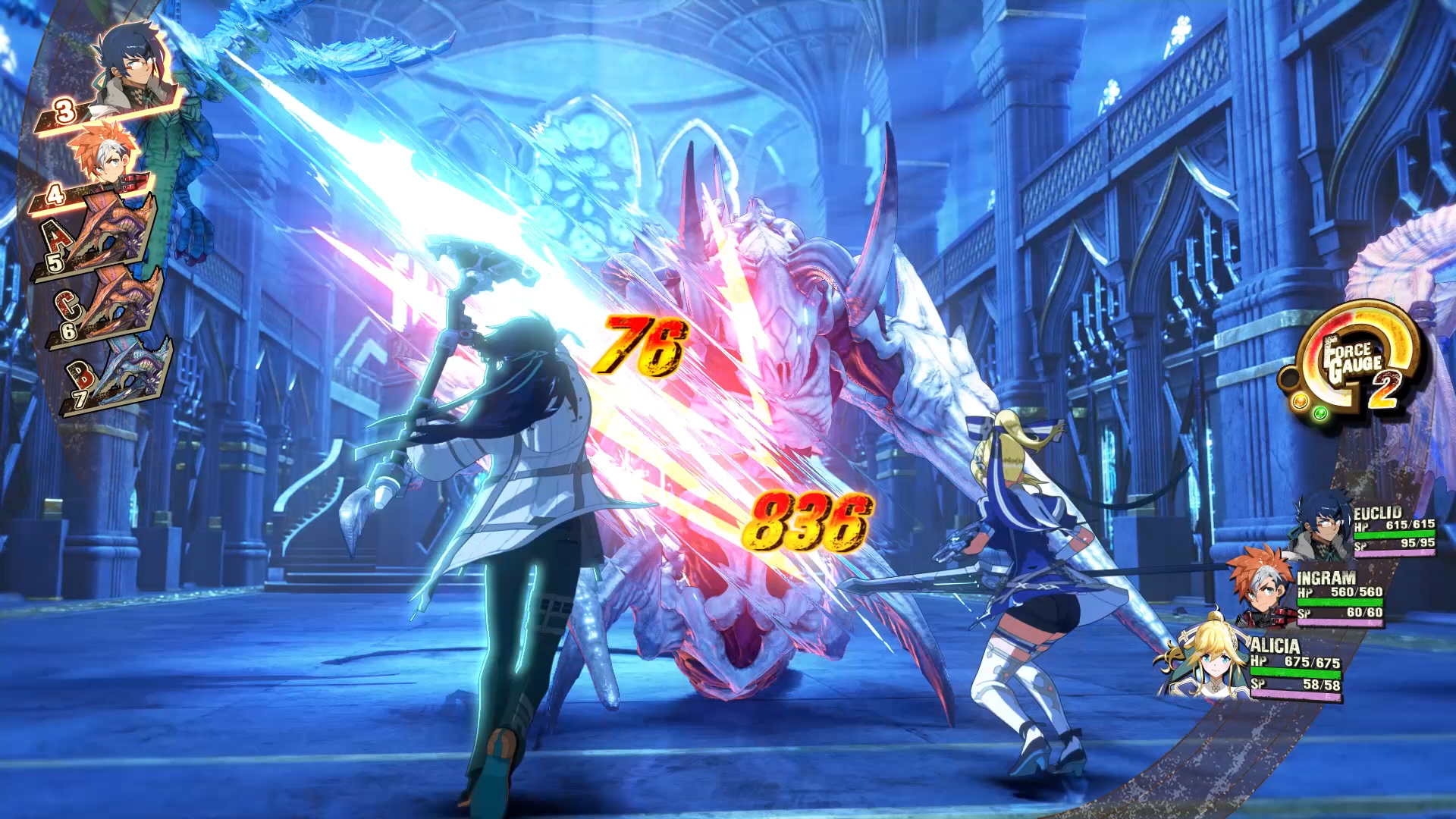
The depiction of a story by someone who worked on both games and anime
4Gamer: You’ve mentioned earlier that before you got into the anime production, you had an idea for an RPG. What kind of concept was it?
Kaneko: Unlike what you might assume, it’s not a story about another world turning into wilderness. While it wasn’t set in the present day, the story was about a dark corner of the real world. Instead of traveling across the world, this RPG revolves around a single city. The concepts of the 6 main characters were already well-developed, even though it was only for the proposal. As much as I’d love to proudly present those characters, I haven’t given up on realizing this idea yet, so I’ll keep it in secret for now. That said, I proudly showed it to Machida in Tokyo the other day. (laughs)
4Gamer: Why was that RPG never made?
Kaneko: Originally, working on that RPG was supposed to be the main priority, but then production for Symphogear entered into full swing. It’s embarrassing to say, but back then I had a misconception about late-night anime being mostly just cute girls doing cute things, so I thought that it was not my battlefield. I wrote the concepts, the ideas, the plot, all in my spare time, and gave it away for free, eager to get back to the development of the RPG. However, the Symphogear project was moving forward at breakneck speed, and I ended up being persuaded to become a part of the main staff, even though I tried to politely decline, many times over. As a result, the work on the RPG had to be suspended. Many things happened, and ARMED FANTASIA took the story idea about “a far future world, where instead of the protagonists, the final boss has won” from that suspended RPG.
4Gamer: So, you can say that this RPG is not exactly the salvaged version of the original RPG idea. By the way, do you think games and anime are on the same level in terms of expressing a story?
Kaneko: At the core it’s the same. However, depending on the medium, the way the story is depicted is going to be different, so it’s a matter of using the medium properly. A TV anime is limited to a 30-minute timeslot, and without the presence of text, the information density tends to be diluted. Therefore, I think it’s a good idea to define a key character for an episode, and focus on the story and the emotions for them specifically. With the games, it’s not as strict. If anything, you might say that games as a medium are better for stories with multiple protagonists.
4Gamer: But to an untrained eye, it feels the opposite, as you only control a single protagonist.
Kaneko: To put it bluntly, it’s common for the protagonist of an event scene to be different from the protagonist being controlled. In games in general, if the protagonist is useless in a battle, they’re not gonna be used there, despite being the protagonist. (laughs) Most likely, the players unconsciously separate the “game progression protagonist” and the “story development protagonist”, and deal with them in parallel. This is why I believe that games as a medium are better suited for stories with cross-character development.
4Gamer: Certainly, such technique can shine because the games are interactive.
Kaneko: On the other hand, there are many techniques and ways of presentation that are exclusive to anime, a non-interactive medium. I would like to strongly emphasize that neither is better or more correct than the other. For something like Symphogear, which combines acting, songs, and action, the best possible expression of the story can only be achieved through anime.
4Gamer: Are there any differences between games and anime in the way you create pacing for the story?
Kaneko: Of course. While in anime you can pace the events exactly the way you want to, in games it’s different. Since the player is the one moving the game forward, sometimes it might happen that right before a big story event occurs, the player takes a pause and stops playing the game. And when it comes to BGM, anime can synchronize it with the climax points of the story, while the pacing of the messages sent to the player in games depends on the player. That said, the music direction is just as important in games, where we’re using different techniques to achieve a similar effect. This is something I’m very particular about.
4Gamer: So, how do you create that “pull” that attracts people to the story? Do you have different approaches between games and anime?
Kaneko: I do. For anime, there’s a sequence that goes Preview -> Opening -> Part A -> Commercials in the middle ->… etc. Some might say that the breaks can mess with the flow, but I’m trying to turn those into a positive thing, like creating a feel like some time has passed in the story during that break, and some “unexpected developments” happened that will create that “pull”. However, with games, there are no such breaks, so the “pull” is being made by giving a “premonition” of things to come. I’m not going to get too deep with the explanation, but, for example, you can put a save point right before a boss fight or some other major moment, which acts as a warning for the players: there is a reason to save here. These days auto-saves have become the norm, so such things can be ignored, but I still think that these “premonitions” can put players in the “alright, let’s do it!” type of mood, which is a type of a “pull” of its own that only games can provide, in the form of a guidance, which can also become the “that’s it for today” stopping point. To summarize, for the anime, an “unexpected development” can become the “pull”, while for games, such “pull” can be a “premonition” of things to come.
4Gamer: A game is a combination of scenarios and systems, so it’s interesting to see the writers step into the realm of game systems.
Kaneko: I think it’s not unusual these days for a game to have different writers for the main story and the random NPCs in villages and towns, but personally I consider the time spent with the latter as another part of the main story, so I’m trying to write most of it myself. Sometimes I have regrets about not doing that. It’s fun to think about the connections between the story events and the information scattered across the world, and to me that’s one of the most enjoyable aspects of being a game writer. Instead of just submitting the script and marking it as the end of my work, I want to continue contributing to the project for as long as I can.
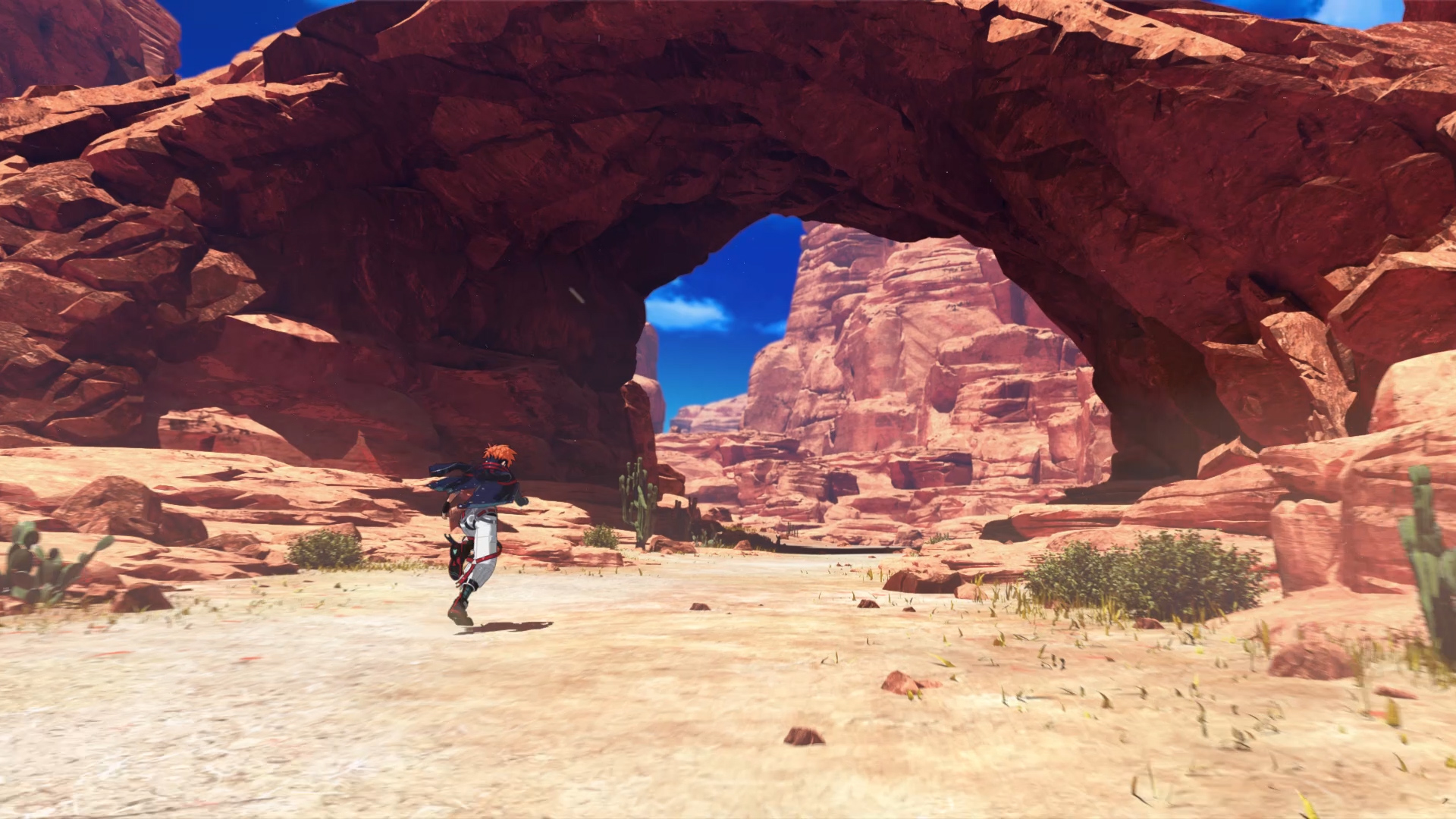
“Kaneko, please, you don’t need to be so rigid”
4Gamer: Your games use a “weird west” setting, where strange things occur in a western-style world. What’s your personal story with this setting?
Kaneko: It all started with old series such as Hissatsu Shigotonin and Fuun Lion-Maru. The background music of Hissatsu Shigotonin was very western and cool, despite the show being set in Edo period. And, in Fuun Lion-Maru, the characters dressed in Western-style attire travel in a covered wagon across the Sengoku period Japan. Besides, isn’t the “Lion” in Lion-Maru that the protagonist transforms into, an English word? (laughs) Both had Western-like approaches despite being set in Japan, so after watching them I realized “Oh, anything is possible.” Entertainment can be born without strictly following the period accuracy or an established setting.
4Gamer: The more viewers indulge in a genre, the more they tend to focus on consistency and accuracy, but those things don’t guarantee that the show will be enjoyable.
Kaneko: I’m not a diehard fan of strict settings myself. I started my career in the game industry at Telenet Japan, as a project assistant on Tenshi no Uta. Even though the game was based on Celtic mythology, I felt like the setting was very far away from my personal knowledge of the mythology at the time. The “young Kaneko,” who only recently graduated, was an ignorant and cheeky boy, and therefore could not tolerate this. (laughs) So, I expressed my concerns to my mentor several times.
4Gamer: And what did they tell you?
Kaneko: “Kaneko, please, you don’t need to be so rigid.” (laughs) Looking back, it’s probably those words that helped me to get rid of my stubbornness. While a nearly perfect and strict setting may become a key factor that can draw some players in, when you think about it the other way around, there won’t be any “space” left or any “place” for the rest of the players to fit in. If anything, the more “loose” you can be, the more likely you’ll see the birth of the “amusement” that comes from the unique connection between the creator and the player. Back then I didn’t understand the meaning of what my mentor said, but I still remember those words even now.
4Gamer: Those words may have been the turning point for you as a creator. By the way, who was that mentor?
Kaneko: Can I say his name? (laughs) It was Kenichi Nishi, who later worked on Moon: Remix RPG Adventure and GiFTPiA. I onimengogize for using your name without permission, Mr. Nishi.
4Gamer: That’s true, you can’t call Nishi’s style “rigid”. Moon had a “no need for heroes” attitude, where the hero left behind the corpses of the animals they killed, and you need to collect “love” by communicating with their souls. GiFTPiA is an “alternative RPG” without combat, in which the main character goes through various experiences in order to become an “adult”. Neither of those games would have come out from a strict focus on RPG fundamentals.
Kaneko: Despite the fact that young Kaneko had nothing to offer but his cockiness, Nishi hired him to work at Telenet Japan simply because he talked a lot about movies during the interview. The direction of our works is so different that you might say it’s complete opposite, but at least I can proudly say that I’m one of the “Kids of the West”. Of course, as far as the work goes, this means that I might be an “Unworthy Kid”. (laughs)
4Gamer: Your flexibility might’ve been a key point too. You were able to gain your own knowledge, and you’re obsessed with details. In a manner of speaking, while your pedantry was being crushed head-on, you were flexible enough to be able to take Nishi’s advice, and put it to good use in your own works.
Kaneko: Maybe it was a roundabout way of imparting me with his wisdom? I came up with the concept for Wild Arms right before I joined Telenet Japan. Later, when it came time to actually make the game, we decided to shift from the strong western vibes (later present in Wild Arms 3) to more of a fantasy type of story, which would make it easier to attract players to the game. I’m sure this was thanks to those 3 months of working with Nishi on the game. Something similar happened later with the anime production. As I presented the original author’s ideas to the director, the intentions were not understood clearly. However, the stuff the director came up with was just as interesting, which made me say “let’s go with your idea!” That’s how we ended up with the style of singing while fighting in Senki Zesshou Symphogear. (laughs)
4Gamer: The “singing while fighthing” element is certainly one of the key parts of Symphogear. It’s all about the fun of unexpected combinations and the wonders of human relationships. It’s interesting that all of this was made in such a way because you decided to not stick to the initial idea too much.
Kaneko: Now, of course I have my own ideals, and, in my position, I can’t allow myself to waver too much. Still, I don’t put myself on a pedestal, so I’m willing to listen to interesting ideas from other people. Otherwise, the entertainment industry, full of squirming geniuses and monsters, would not allow me to put food on my plate. Since I’m neither a genius nor a monster, I struggle to compete with them.
4Gamer: Finally, can you give a message to the readers who are looking forward to ARMED FANTASIA?
Kaneko: For the first time, we’ve decided to create a game with the help of a Kickstarter project. What we lack is being supplied by those who are supporting us, and the things are looking brighter and brighter. We would like to ask for your support in order to further improve the game.
4Gamer: Thank you very much.
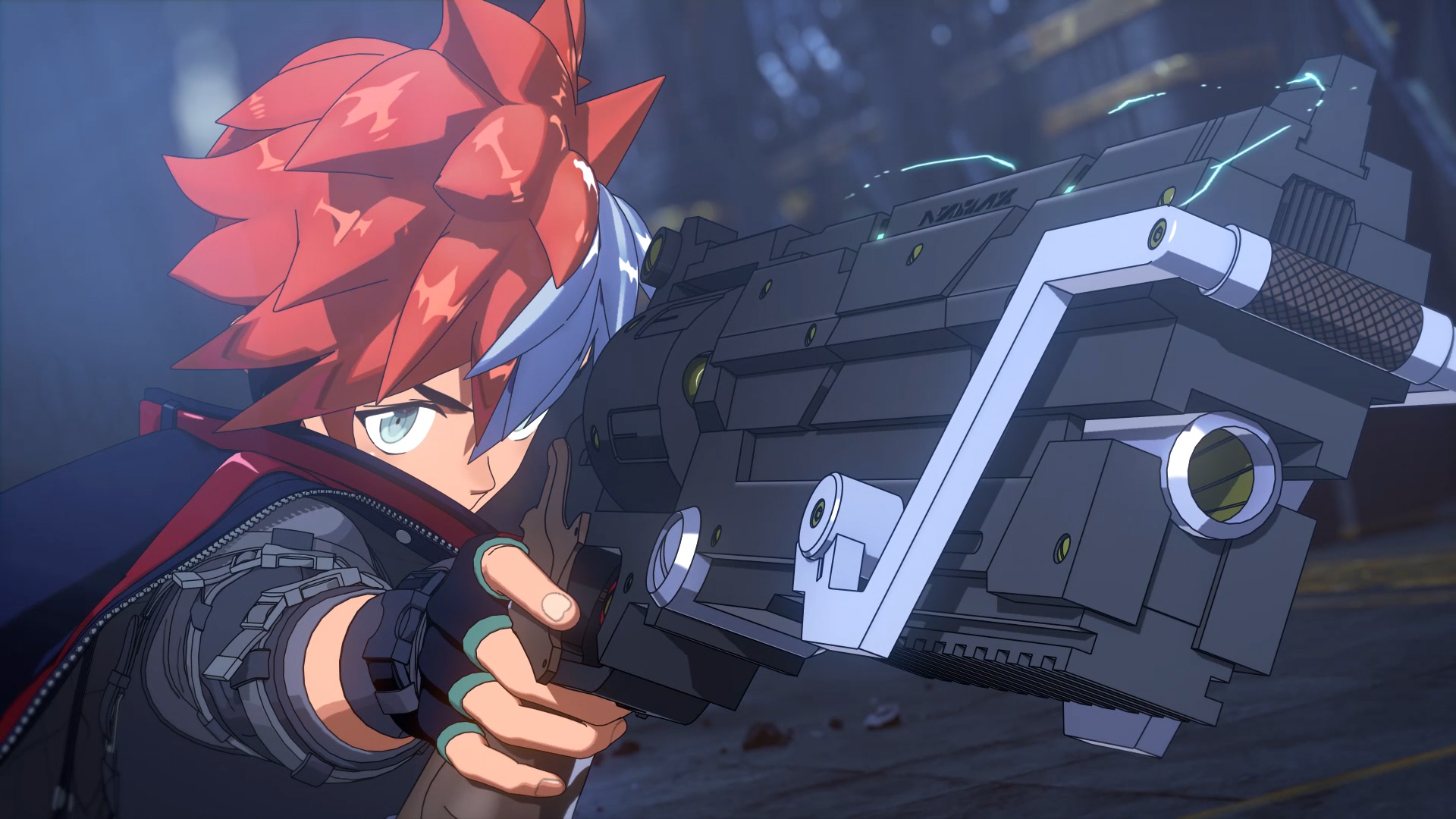
Source: https://www.4gamer.net/games/651/G065186/20221014051/
ARMED FANTASIA website: https://wildbunchproductions.co.jp/
